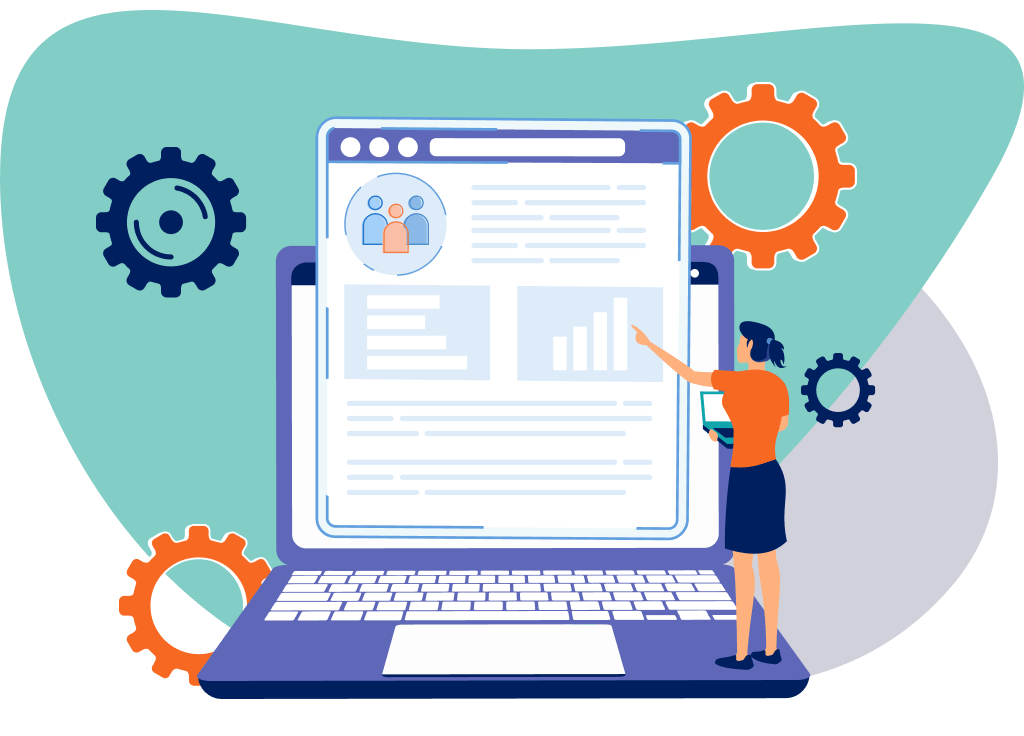Workflow automation
Work smarter by increasing efficiency and streamlining experiences for customers and employees

What is workflow automation?
Workflow automation brings together the people and information needed to get work done completely and correctly the first time, every time. It turns intelligence into action by tapping into data, analyzing the current need, and providing the best response at that moment.
When used as part of a low-code platform for managing work at enterprise scale, workflow automation helps you work more efficiently; make faster, better, more accurate decisions; and deliver meaningful results quickly.
Comparing workflow automation and business process automation
While business process automation (BPA) and workflow automation share the goal of optimizing processes, they differ in scope and focus.
BPA
BPA is a holistic organizational transformation that:
- Typically encompasses a broader range of organizational processes
- Includes strategic planning and decision-making
- Is a strategic orchestrator, aligning organizational goals with automated processes
Workflow automation
Workflow automation, on the other hand, is a targeted, task-level enhancement that:
- Focuses on specific steps within a process
- Emphasizes the flow of tasks among team members
- Is an agile, tactical solution for day-to-day operations, providing a granular view of individual tasks
Both are invaluable, but the choice of one or the other depends on the specific goals of your organization.
Why use workflow automation?
Workflow automation allows companies to unlock their full potential. This powerful tool streamlines processes and enhances efficiency, bringing forth an array of benefits:
- Reducing manual errors by automating repetitive tasks, ensuring accuracy and consistency
- Accelerating task completion, saving companies valuable time and resources by reducing the need for manual interventions
- Fostering collaboration among team members by providing a centralized communication and task management platform
- Enhancing transparency, which allows stakeholders to track progress in real time and make adjustments as process needs change
Companies can embrace increased productivity and foster greater job satisfaction as workflow automation empowers teams to focus on high-value tasks. It also facilitates compliance by ensuring that processes adhere to established standards. Say goodbye to bottlenecks and delays, and welcome a seamless, optimized operation that propels businesses forward.


How does workflow automation work?
Highly predictable work can be scripted and programmed, but unpredictable work requires quick thinking and constant decision-making. Workflow automation brings together the people and information needed to get both types of work done completely and correctly the first time – every time.


How to get value from intelligent workflows
Drive consistent outcomes, deliver meaningful results, and be ready for what comes next.
Client case studies
See how businesses get work done with workflow automation.
Types of workflow automation

Onboarding relationships
Automate and streamline work with new customers, vendors, and employees to reduce operational costs, increase accuracy, and build trust and loyalty from the very first interaction.

Servicing customers
Automate and orchestrate every service journey, no matter where customers engage. By connecting the right people, data, and systems, you’ll deliver better, consistent outcomes that result in higher levels of customer satisfaction and loyalty.

Operating efficiently
Execute processes quickly and accurately while boosting cost efficiency. Process standardization also simplifies and improves the customer and employee experience.

Managing expectations
Predict exceptions and detect anomalies that can be fixed with automation. This enables your business to respond in real time and to build trust with customers while improving experiences for everyone.

Empowering business
Work faster and adapt to unforeseen changes by using low code application development alongside workflow automation. This empowers all your stakeholders to adapt workflows as needed while bringing the right people together throughout the development process.
Business rules
Automates processes within a business application
Decisioning
Uses AI to streamline experiences across channels
Case management
Manages complex human and machine work
Robotic process automation
Software robots used to automate work
Chatbots and virtual assistants
Conversations between employees, bots, and more

The future of workflow automation
The future of workflow automation is driven by agentic AI—intelligent agents that act autonomously, adapt in real time, and optimize processes without constant human input. These systems go beyond efficiency, enabling personalized, responsive workflows that evolve with changing business needs and empower both customers and employees. This evolution marks a significant shift from mere automation to intelligent, self-optimizing ecosystems that continuously enhance operational agility and strategic decision-making.
Frequently Asked Questions about workflow automation

